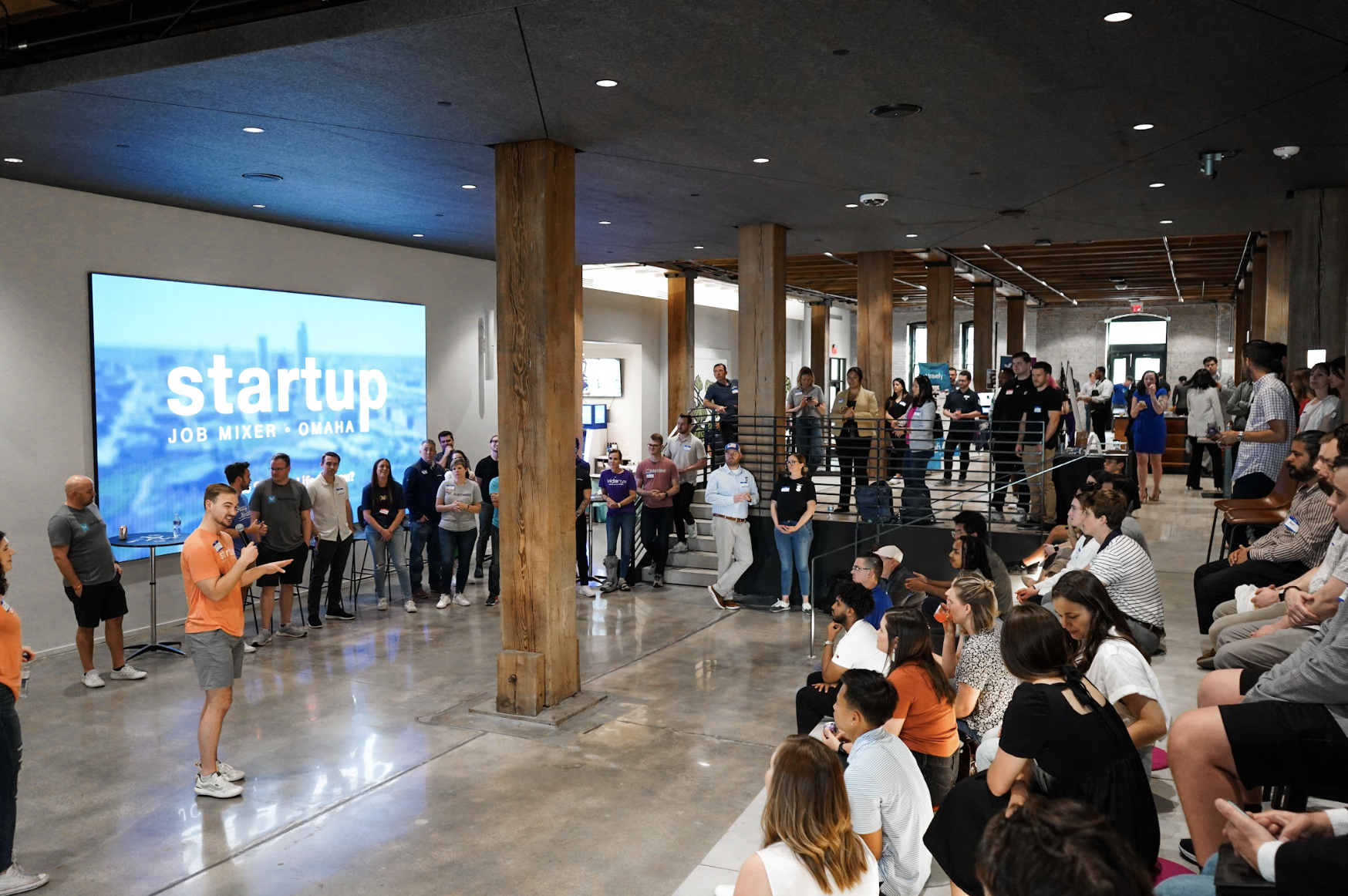 Founder Friday is a weekly guest post written by a founder who is based in or hails from the Silicon Prairie. Each month, a topic relevant to startups is presented and founders share lessons learned or best practices utilized on that topic. January’s topic is working remotely.
Founder Friday is a weekly guest post written by a founder who is based in or hails from the Silicon Prairie. Each month, a topic relevant to startups is presented and founders share lessons learned or best practices utilized on that topic. January’s topic is working remotely.
About the author: Wade Foster is the co-founder and CEO of Zapier, a Mountain View, Calif.-based startup that got its start in 2011 at Startup Weekend Columbia. Zapier went on to participate in Y Combinator, raise a seed round of funding and establish a remote team which includes three Silicon Prairie-based employees.

Editor’s note: This post was originally published on the Zapier blog as part of Startup Edition, a weekly digest of advice from bloggers in the startup community. SPN was given permission to re-publish here.
I’ve written before about how we manage Zapier as a remote team. But one point that is constantly brought up is how co-located teams have an easier time building culture vs. remote teams.
In fact, I’ve even had co-located teams tell me their culture problems were solved by simply buying a foosball table. Though I challenge the truthiness of that statement, I don’t think there’s a quick path to building company culture, especially for a remote team.
With co-located teams, it’s really easy to ignore culture with the expectation that it will naturally happen. In 99 percent of situations (made up number), this is simply not true, but by the time a co-located team realizes it, it might be too late to repair their culture.
With a distributed team you know going in that culture will be really hard to build. As a remote team you don’t delude yourself thinking that culture will magically happen. You go in eyes wide open. If a strong culture doesn’t develop it’s not because you didn’t try, it’s usually due to another reason.
With that in mind, how can you go about building culture when there are thousands of miles between teammates? Here are seven principles that work for us at Zapier:
1. Culture is About More Than Ping-Pong Tables
The first thing to realize is that your culture has to be built around more than ping pong tables. Games and other group activities that lend themselves to being in person are simply not a possibility on a day-to-day basis for most remote teams. Therefore, your culture has to be built around something more than playing table tennis to unite the team.
2. Culture is About How You Work

Everyone that works on Zapier has bought into the belief that you come to work for the work, not for the ping pong. Most of your time at work is going to be work, so the work has to be rewarding. Here are examples:
- How we talk to customers (is speed more important than quality?) (above)
- How we communicate with each other (is this a phone call conversation or an email conversation?)
- How much work do you do (do we work 40 hours or 80 hours?)
Those activities create culture at Zapier, much more than a ping pong table would if we were co-located.
3. Tools Allow for Collaboration and Fun
A co-located office develops its own personality through inside jokes, shared experiences and a collaborative environment, such as a meeting room with white boards. A remote team needs to develop something similar. The easiest way to do this is with your day-to-day tool set. Here are some tools we love that have helped build our culture.
Campfire

Campfire is our digital office. If you’re in Campfire then you’re at work. It’s the online version of the water cooler. Where random work discussions happen, but also where news, jokes and pop culture are bantered back and forth. The best part of Campfire is that our water cooler discussions are recorded. Nothing gets lost. And there’s no “behind-your-back politics” that happens in many co-located offices. (Above: Most of us use Flint, a Mac Campfire client).
GIFs and Memes

Most online communities have a go-to set of GIFs and memes they love. Zapier is no different. Being able to drop a relevant GIF or meme seconds after a timely Campfire comment is one of the more spectacularly amusing things that happens in our little digital office place.
P2
Recently, we’ve added P2 to our repertoire. P2 is a WordPress theme that makes it really easy to post updates. We use it to replace all our team emails. The asynchronous nature of P2 and threaded comments makes it a lot easier to share things—from the Cardinals advancing to the World Series to architectural scaling issues—P2 helps keep everyone on the same page. It’s almost like our own mini version of Reddit.
If you’re interested in learning more about P2 check out “How P2 Changed Automatic” (the team behind WordPress) here.
We’ve also had success using iDoneThis in a similar way to keep teammates up-to-date on what they are doing on a daily basis.
Sqwiggle and Google Hangouts

Chat is awesome, but being able to talk in real time and visually see someone is still pretty important for some issues. Sqwiggle for quick, ad-hoc one-on-one meetings or Google Hangouts for bigger team meetings make it easy to work in real time. During these chats, it’s always fun to have a five-minute personal check up just to see what the other person/people are up to.
Music Subscriptions with Uncover
One of my favorite new services is Uncover. Uncover makes it really easy to give perks to your employees. We’ve given everyone premium Spotify/Rdio accounts which is great since many remote employees love to listen to music during the day.
Having music handy makes it fun to share what everyone is listening to and hear what sort of eclectic tastes everyone has.
4. In Person Meetups are Important

We get the whole gang together two to three times per year for a company retreat. During the retreat we do things that help foster our culture. Things like pairing up to cook team dinners and hiking as a group have helped us learn more about each other and our families—it’s knowledge we wouldn’t have gained in a normal week.
5. Local Community Sponsorship Shows Presence

We haven’t done this a ton, but when we have it works. So far we’ve sponsored dev/como, which James Carr runs, a handful of times and we’ve also made sure to go back and sponsor Startup Weekend Columbia every year (above).
Any time someone on the team want to do something like this in their city, we’re happy to sponsor. I imagine as the team grows we’ll be fortunate to help foster many local communities around the globe.
By doing this, team members feel more like there is a local presence in their hometown.
6. Trust is the Foundation
Remote teams have to trust their teammates. Their is simply no way around it. The beauty of trusting your teammates is that often times your teammates reward you. Most people genuinely want to do a good job. In a remote team there aren’t any silly rules about having your butts in a seat during certain hours of the day. This means at the end of the week you either have something to show for your week or not. This means you trust that your teammates are getting something done. But also your teammates trust you. To earn that trust you want to make sure you have something to show for your work each week.
7. Getting Things Done

Getting things done tends to be a by-product of trust. Because there is an implicit trust in your teammates and because there is no other way to measure results in a remote team, the team inherently evaluates each other on what was completed that week. We do this by sharing weekly updates on our internal blog (P2) every Friday—I bet you can imagine how it would feel to be the only one with nothing to show. That feeling creates a desire to finish something important each week.
How Do You Build Culture?
As remote teams get more popular, I expect we’ll hear more about the cultures in remote teams and how they develop differently from co-located teams. If you have any experiences with culture in a remote team (or how it differs from co-located team), please share with everyone in the comments.
Credits: Ping pong photo by Wonderlane via Flickr. Other photos courtesy of Wade Foster.


